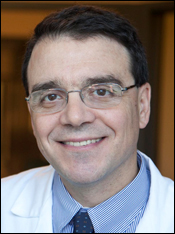Takotsubo cardiomyopathy occurs in some patients with pheochromocytoma, paraganglioma
Takotsubo-like catecholamine cardiomyopathy occurred in nearly 3% of patients with secreting pheochromocytoma and paraganglioma, researchers in Canada reported.
“Pheochromocytoma and paraganglioma (PPGL) may occur sporadically or as part of hereditary syndrome,” Nadia Gagnon, MD, of the division of endocrinology at Centre Hospitalier de l’Universite de Montreal, and colleagues wrote. “At least one-third of all patients with PPGL have disease-causing germline mutations. In the presence of acute Takotsubo cardiomyopathy, there is a paucity of literature available on the completion of biochemical testing to exclude PPGL, but clearly not all cases are screened.”
Using data from patients treated at the center between January 1995 and May 2016, Gagnon and colleagues identified 275 patients with pheochromocytoma (n = 151) and paraganglioma (n = 121) and reviewed clinical and paraclinical information on patients with Takotsubo cardiomyopathy. They also reviewed literature on PPGL-related Takotsubo cardiomyopathy in studies published from 1990 to 2015.
Of 152 patients with secreting pheochromocytoma and paraganglioma, four (2.6%) had Takotsubo-like catecholamine cardiomyopathy – two with pheochromocytoma and two with paraganglioma. There were no cardiac events among 123 patients with unknown presurgical secretion (n = 51) or nonsecreting tumors (n = 72).
Two patients with pheochromocytoma and two with paraganglioma met the criteria for Takotsubo-like catecholamine cardiomyopathy. Gagnon and colleagues identified 59 additional cases of Takotsubo-like catecholamine cardiomyopathy cited in the literature over the last 25 years, which they included in their analysis.
In three cases, the researchers identified stressor events, including one upper respiratory tract infection and two surgeries, that triggered the condition. All cases of pheochromocytoma and paraganglioma were diagnosed following a cardiac event, after the investigation of lesions found during imaging.
“We believe that the exclusion of [pheochromocytoma and paraganglioma] diagnosis should be part of the investigation of all patients presenting with [Takotsubo-like catecholamine cardiomyopathy],” the researchers wrote. “The prevalence of [pheochromocytoma and paraganglioma] among patients with [Takotsubo cardiomyopathy] may have been underestimated so far due to lack of systematic screening; thus, further studies are needed to determine the real prevalence of [pheochromocytoma and paraganglioma] in [Takotsubo cardiomyopathy].” – by Andy Polhamus
Disclosure: The researchers report no relevant financial disclosures.

